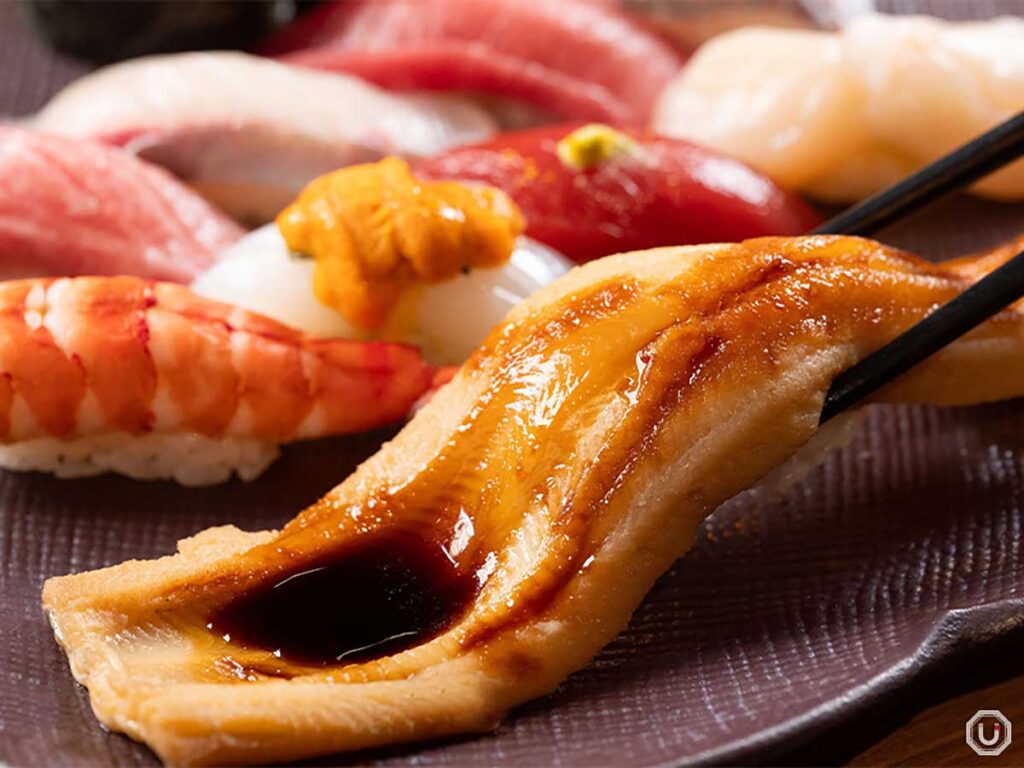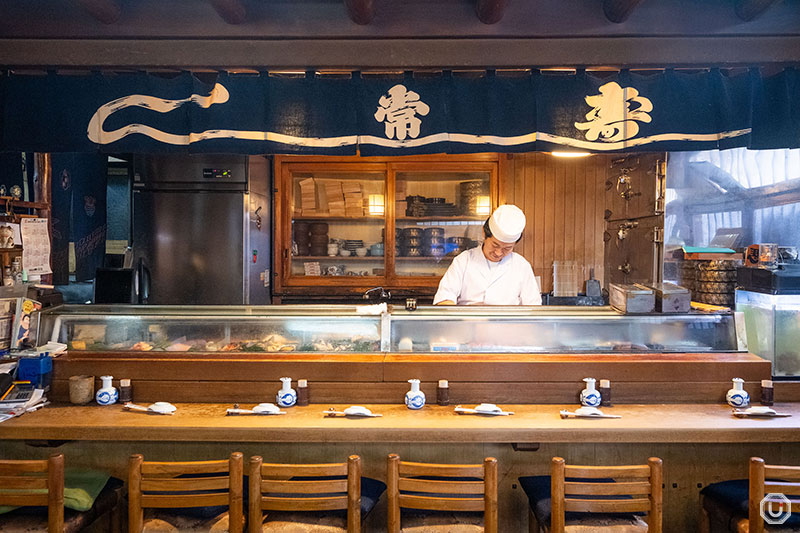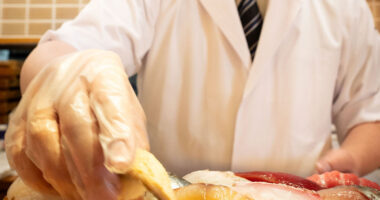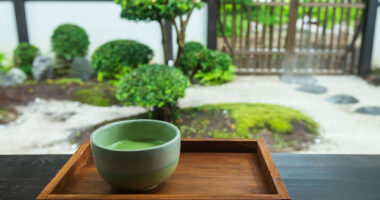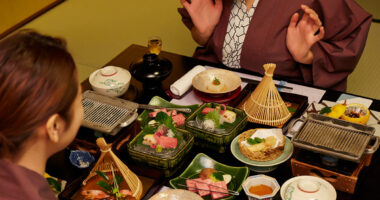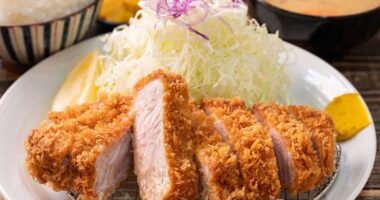Sushi is loved around the world as a defining Japanese cuisine, but many people are unsure about how to eat it properly and about the associated etiquette. For visitors to Japan in particular, there are a number of helpful rules to know—how to behave at a sushi bar, the order of eating, how to use chopsticks, and more.
This guide explains practical sushi etiquette and how to eat sushi in any setting—from high-end restaurants to kaiten-zushi (conveyor-belt sushi).
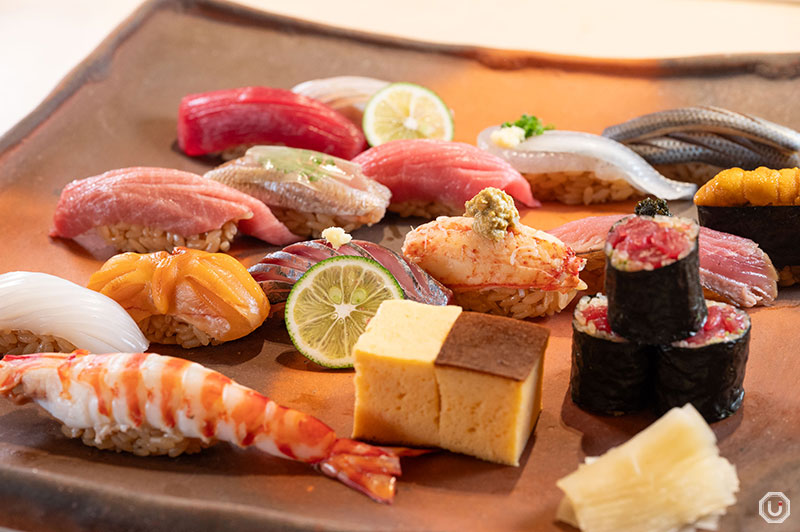
“Seasonal Omakase Nigiri Course: Tsuki” at Sushi Ginza Onodera SOUHONTEN
Basic knowledge and how to eat each type
To enjoy sushi properly, it helps to understand the main types and their features. Sushi comes in several forms, and each has a best-practice way to eat it.
Nigiri-zushi: features and how to eat it
Nigiri-zushi (hand-formed sushi) is the most iconic style: a piece of seafood topping called neta (topping) placed over shari (vinegared rice).
Nigiri-zushi can be eaten with either the hands or chopsticks; both are considered proper in Japan. If eating by hand, lightly hold the piece with thumb, index, and middle finger, dip the topping side into shōyu (soy sauce), and eat it in one bite.
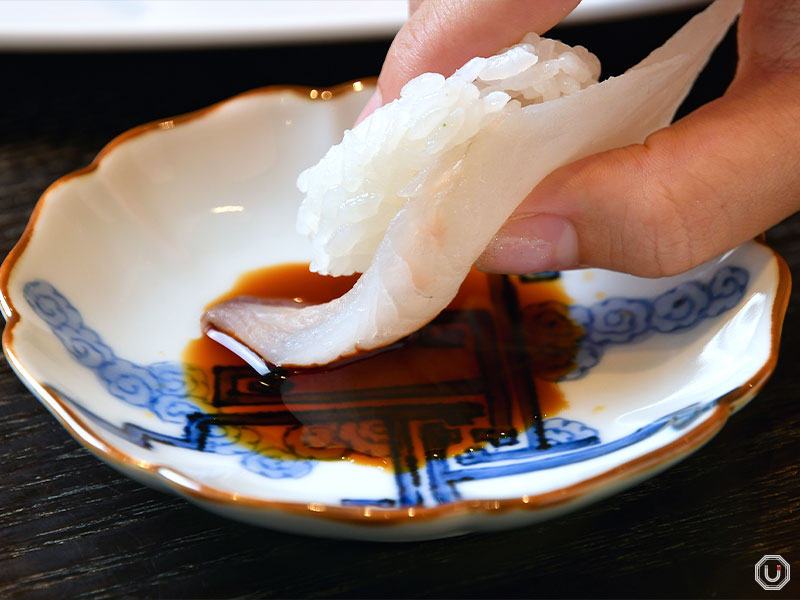
Eating nigiri-zushi at “Tsukiji Sushiiwa Tsukijishiten”
If using chopsticks, hold the piece gently so it doesn’t fall apart, and likewise dip the topping side into shoyu.
When seasoning nigiri-zushi with shoyu, dip only the neta, not the shari. This keeps the balance between the two while adding just a touch of saltiness.
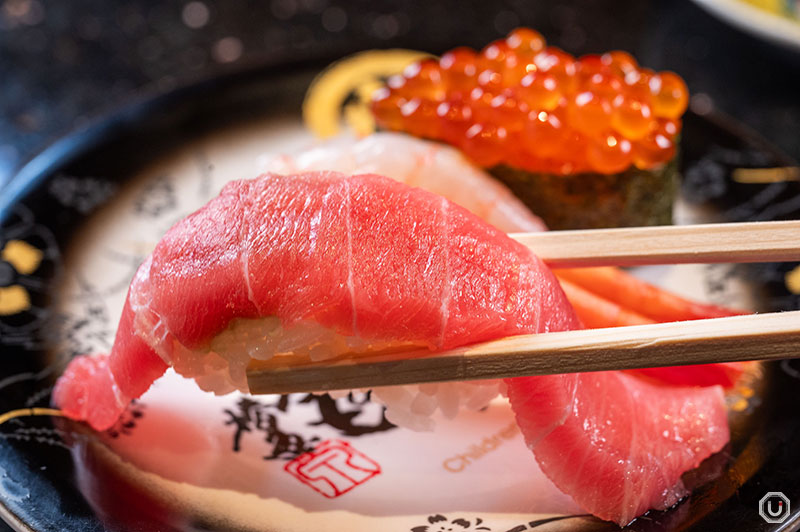
Eating nigiri-zushi with chopsticks at “Kanazawa Maimon Sushi”
Maki-zushi and gunkan-maki: tips for eating
Maki-zushi (rolled sushi) is rice and fillings rolled in seaweed. It’s generally eaten with chopsticks.
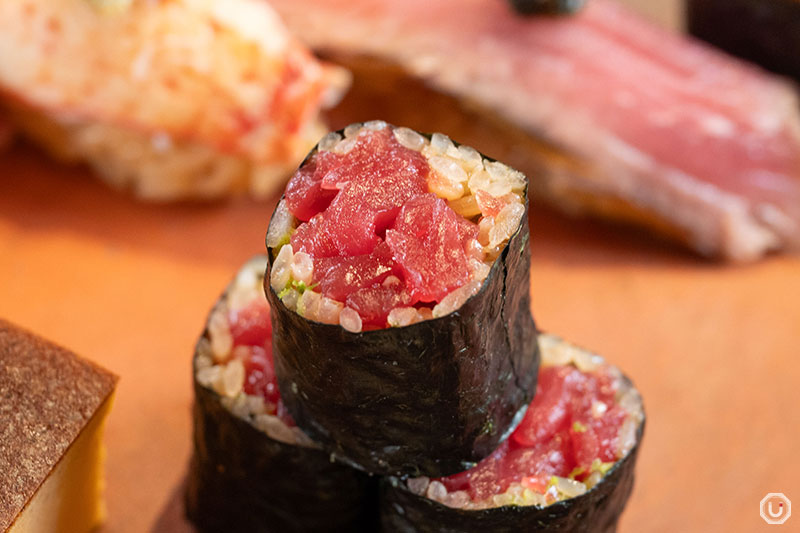
Tekkamaki (tuna maki-zushi) from the “Seasonal Omakase Nigiri Course: Tsuki” served at “Sushi Ginza Onodera Main Branch”
Gunkan-maki (battleship-style rolls) can be tricky to dip directly. A recommended technique is to dip a piece of gari (pickled ginger) in soy sauce and use it as a brush to apply a small amount onto the neta. This prevents the roll from falling apart. They are often easiest to eat with your hands, but can be handled carefully with chopsticks.
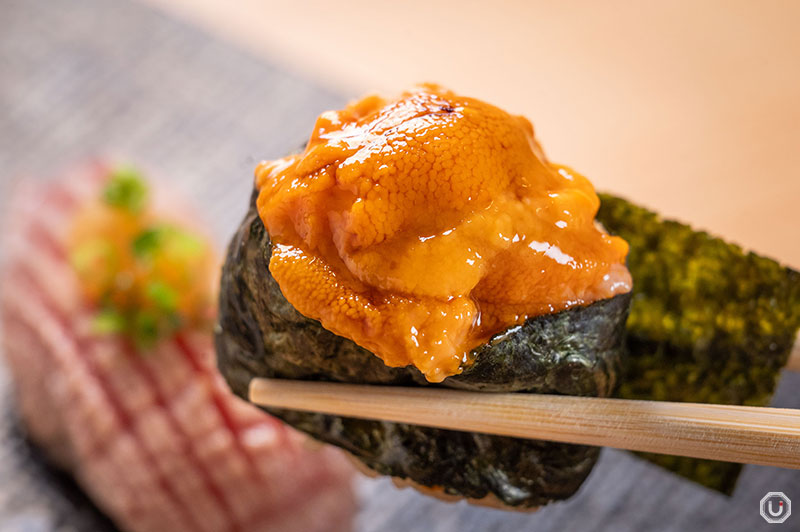
“Bafun Uni Gunkan” served at “Sushi Ginza Onodera Main Branch”
Temaki (hand rolls) are cone-shaped and should always be eaten with the hands.
They’re best while the nori is still crisp—seaweed softens over time. If adding shoyu to a hand roll, lightly dip the filling end before eating.
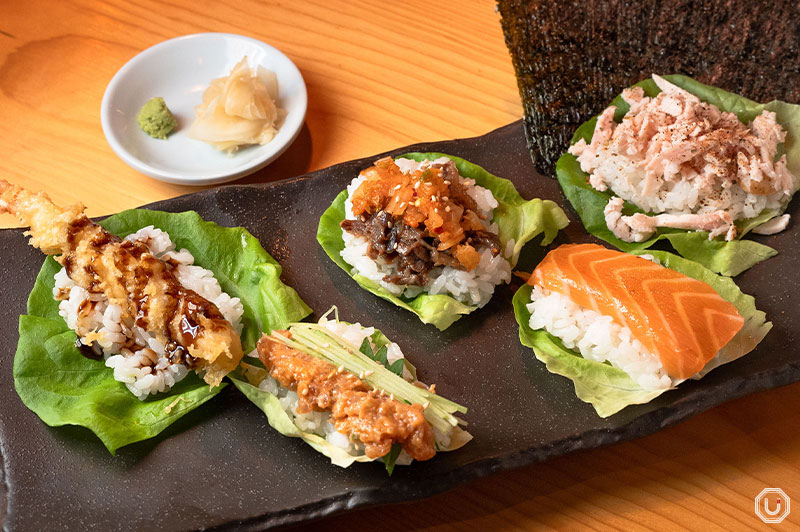
“5 Temaki Set” served at “Gonpachi NORI-TEMAKI Harajuku”
Understanding the difference between sashimi and sushi
Sashimi isn’t sushi, though it’s commonly served at sushi restaurants and often confused with it. For sashimi, place a small amount of wasabi on the seafood and dip in shoyu before eating.
The main difference is the rice: sushi balances neta and shari together, so you should enjoy both in one bite. With sashimi, the goal is to appreciate the pure flavor of the seafood—wasabi and shoyu simply accent it.
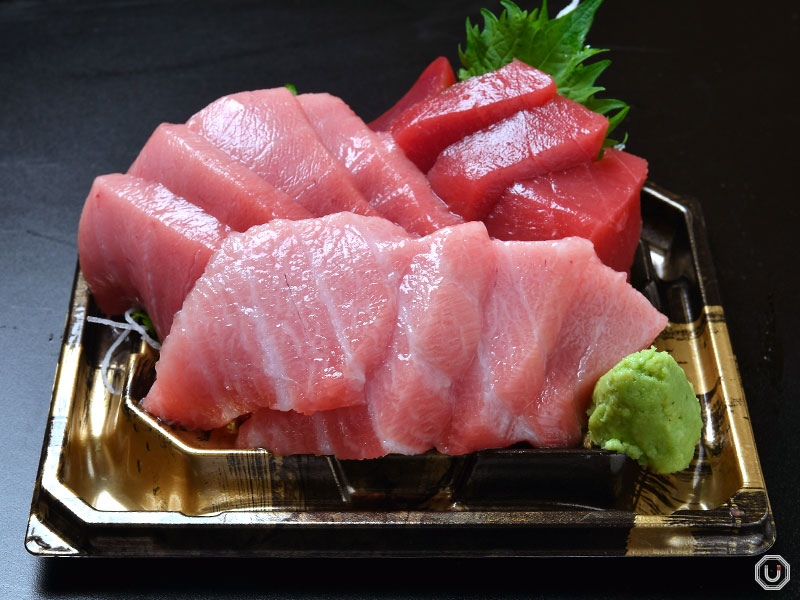
“Three Colors Sashimi” served at “Maguroya Kurogin Tsukiji Honten”
Proper use of shoyu and wasabi
Seasoning makes a big difference in how sushi tastes. Knowing how to use shoyu and wasabi will help you bring out sushi’s true flavors.
How to use the shoyu dish (and what to avoid)
Pour only a minimal amount of shoyu into the dish, and lightly dip only the topping—not the rice. If the rice soaks up too much shoyu, the saltiness overwhelms the balance the chef intended.
At high-end sushi bars, the chef may pre-season pieces. In that case, eat them as served or add only a touch of shoyu. As a rule, a little goes a long way—filling the dish with shoyu and leaving most of it unused is considered poor form.
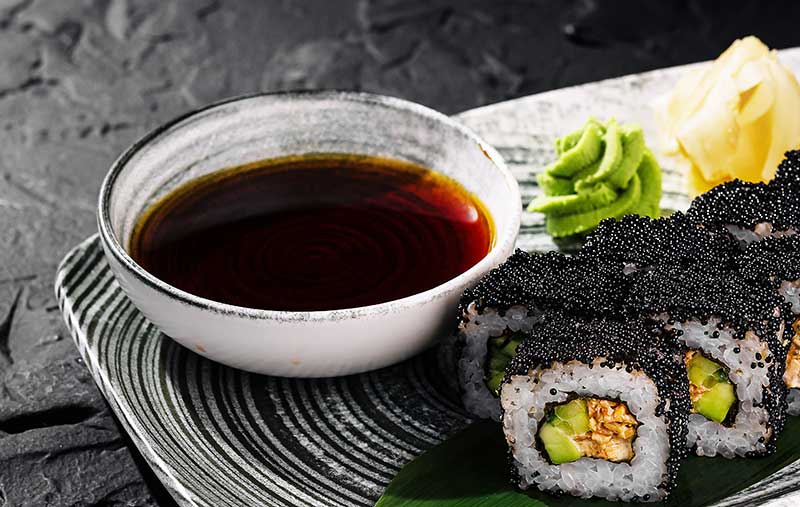
Shoyu dish (photo for illustrative purposes)
How to use wasabi correctly (and how much)
There are many misconceptions about wasabi. Mixing it into your shoyu is widely seen as less proper these days. The correct approach is to place a small amount directly on the topping—or simply eat the piece as is if the chef has already added it.
In many high-end restaurants, the chef places the ideal amount of wasabi between the shari and neta when forming the piece. If you want more heat, add a tiny, rice-grain-sized dab to the neta and then touch it to shoyu. This preserves the aroma and sharpness best.
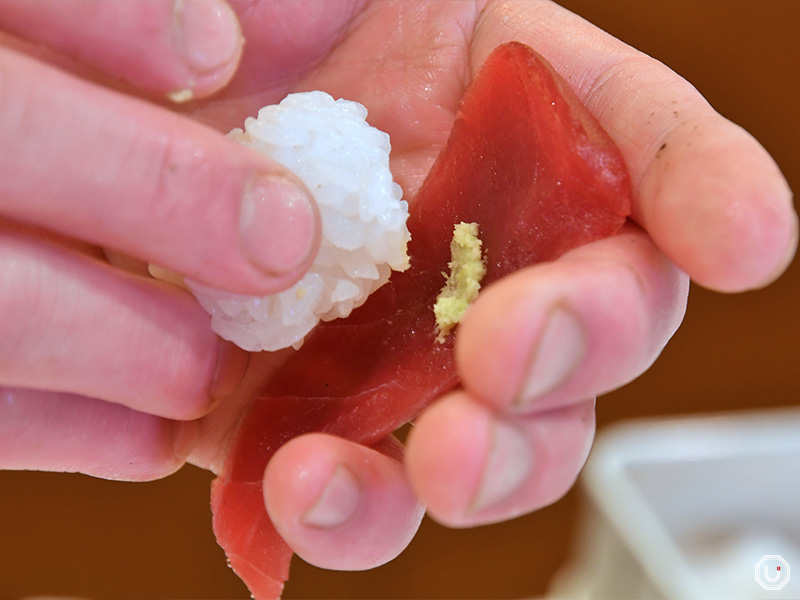
A sushi chef preparing sushi at “Tsukiji Sushi Iwa”
Gari: its role and how to eat it
Gari is an important side served with sushi. Its main role is as a palate cleanser between different pieces, helping each fish shine.
A key point: don’t place gari on top of your sushi. Treat it as a palate refresher—eat a little between pieces. It’s also believed to have mild antibacterial benefits that are handy when eating raw fish.
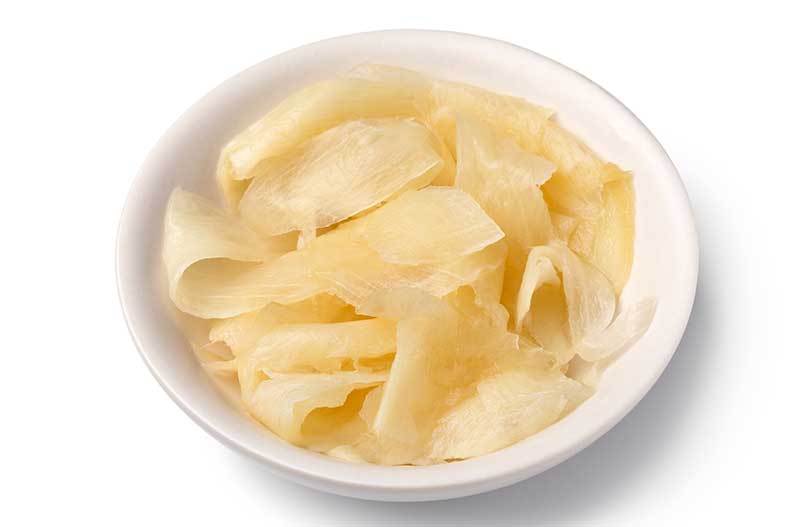
A dish of gari (photo for illustrative purposes)
The order of eating and managing your palate
Order matters. Choosing a good progression lets you taste each piece at its best and makes the whole meal more satisfying.
General order to follow
As a general rule, start with milder white fish, move to richer red fish and bold flavors like grilled or simmered items, and finish with rolls. This way you fully enjoy delicate flavors first and gradually build up to stronger ones.
For example, you might begin with flounder or sea bream, move to silver-skinned fish like mackerel or horse mackerel, then tuna cuts such as lean, medium-fatty, and fatty, and close with simmered eel or vinegared small fish before finishing with rolls. This isn’t a hard rule—adjust to taste and how you’re feeling.
Tea and agari: when to drink it
Hot green tea served at sushi establishments is called agari (the “finish,” traditionally served at the end). While this is the industry term, as a customer you would simply ask for o-cha (tea). Nowadays it’s fine to sip it during the meal to refresh your palate, and it’s especially effective after oily pieces or whenever you want to reset your taste buds.
Good moments for tea include after fatty tuna or when moving from stronger to milder flavors. Avoid drinking while food is in your mouth—swallow first, then take tea or your next bite.
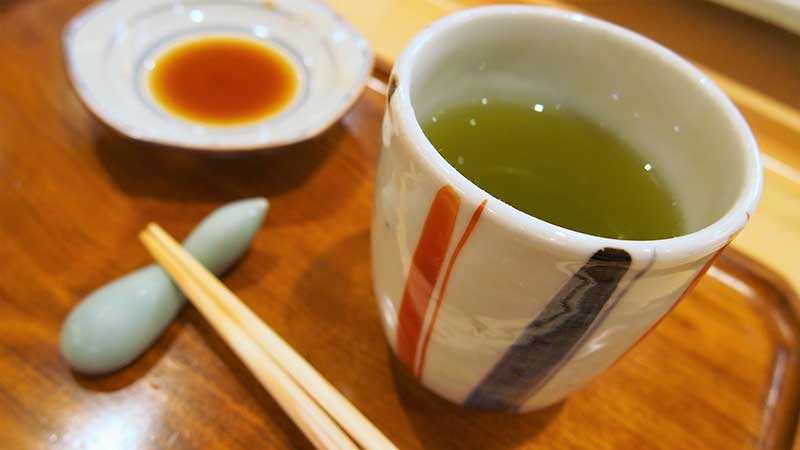
A cup of green tea at a sushi restaurant (photo for illustrative purposes)
Enjoying the balance between neta and shari
One of sushi’s joys is the precise balance of neta and shari. Chefs adjust rice amount and pressure to match each topping. To experience that balance, aim to eat each piece in one bite.
Eating a piece in one go lets neta and shari blend at the same moment, creating the intended harmony. Biting pieces in half can upset that balance and diminish the experience.

Maguro Nigiri served at “Tsunesushi”
Manners and behavior at sushi restaurants
Good manners enhance your own meal and show consideration for other guests and the chef. Expectations can differ between high-end bars and casual conveyor-belt spots, so it helps to know the differences.
High-end counters: etiquette and talking with the chef
At fine counters, you’re close to the chef, and interaction is part of the fun. At the counter, enjoy polite, timely conversation—asking “What do you recommend?” or “What’s especially good today?” can improve your experience. If the chef is busy or helping other guests, wait for a better moment.
Choosing omakase (chef’s selection) lets you enjoy the best seasonal items in an ideal order. If ordering à la carte, avoid placing huge orders at once; request two to three pieces at a time and follow the chef’s pace. Always ask permission before taking photos.
Kaiten-zushi: casual manners and key differences
Kaiten-zushi is casual, but manners still apply. The most important rule is not to return a plate once you’ve taken it. Don’t touch plates on the belt unnecessarily or move items around.
Prices are often indicated by plate color, so learn the system. Many shops use touch-screen ordering so you can get freshly made pieces. If you’re with children, please ensure they don’t disturb other guests.

An Umami bites writer enjoying kaiten-zushi at “Magurobito Akihabara”
Tips for takeout sushi
For takeout, let the sushi warm slightly toward room temperature before eating—this improves the texture and flavor of the rice. Don’t leave it out too long, though; for safety, eat it as soon as possible.
Takeout sets usually include separate shoyu, wasabi, and gari. Use them as you would at the counter: dip the topping side in shoyu, use a modest amount of wasabi, and refresh with gari between pieces. Handle boxed sushi gently with chopsticks so it doesn’t fall apart.

“Omakase Nigiri 10 Pieces” (reservations by phone only) at “Sushi Ginza Onodera SOUHONTEN”
Etiquette for visitors: useful language and practical advice
When enjoying sushi in Japan, understanding cultural differences and showing respect for the tradition will make your experience richer. Here are practical tips to help you get the most out of it.
Useful Japanese phrases at a sushi shop
Learning a few phrases can enhance your visit. “What do you recommend?” in Japanese is osusume wa nan desu ka. Itadakimasu (“let’s eat” / an expression of gratitude) is said before eating, and gochisōsama deshita (“Thank you for the meal”) is said after.
Other handy phrases include namamono ga nigate desu (“I’m not comfortable with raw foods”) and karaimono wa daijōbu desu (“I’m fine with spicy foods,” referring in this case to the sinus-clearing effects of wasabi). For paying, say okaikei onegaishimasu (“Check, please”). These help smooth communication.
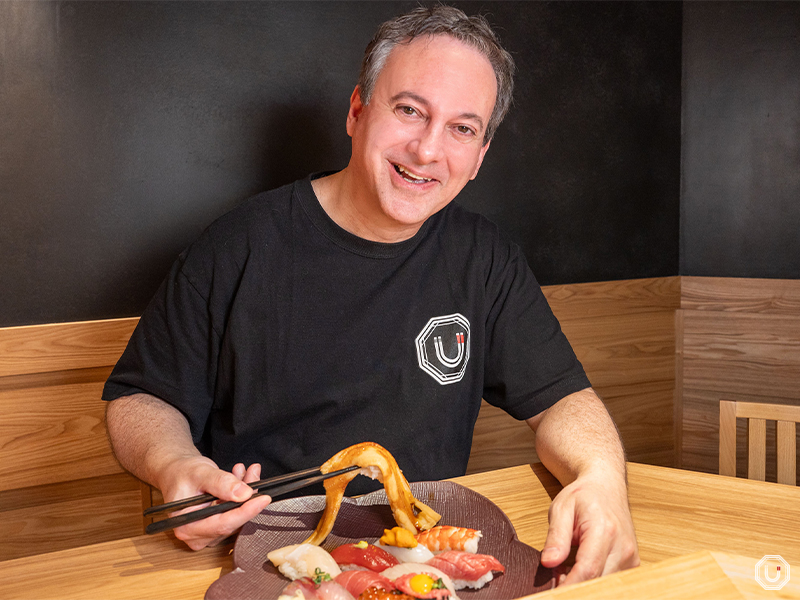
An Umami bites writer enjoying sushi at “Tsukiji Sushikuro Ginza Inns”
Summary
Understanding sushi etiquette helps you enjoy Japan’s food culture more deeply. You can eat nigiri with hands or chopsticks; dip only the topping lightly in shoyu; and use wasabi directly on the topping (or as served by the chef). Use gari as a palate cleanser and follow a progression from milder to stronger flavors for the best overall experience.
At fine counters, enjoy respectful conversation with the chef; at kaiten-zushi spots, keep it casual but courteous. Learning a few phrases goes a long way. With these tips, you’ll be able to appreciate the craft and spirit behind sushi—and savor it to the fullest.
To explore even more, including history and deeper cultural context, check out our related guides on Japan’s sushi culture and how to order like a local.
